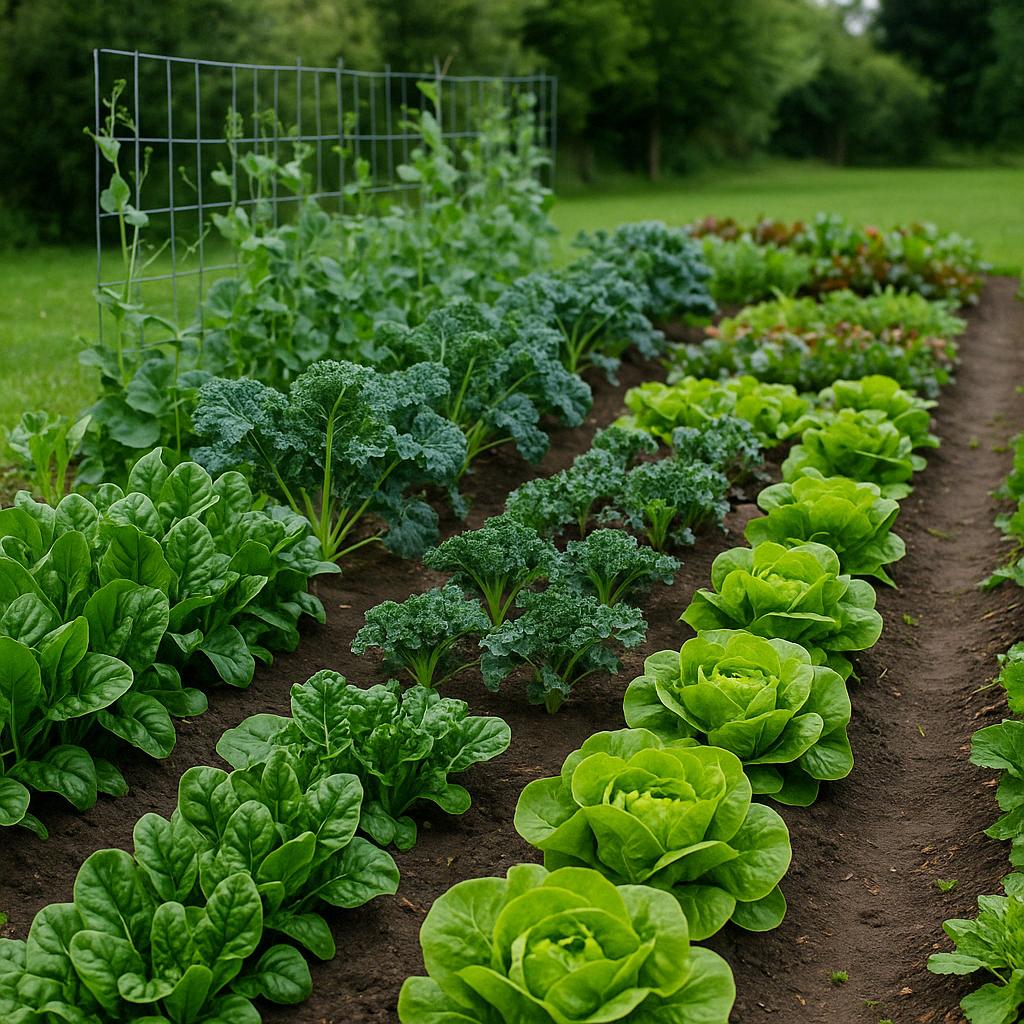
Bellevue’s Climate Zone and Spring Conditions
Bellevue, located in USDA Hardiness Zone 8b, enjoys mild, wet winters and temperate, moist springs. These conditions set the stage for a lush, productive garden. Spring brings consistent rainfall, moderate temperatures, and a long growing season—ideal for a variety of cool-weather crops that thrive before the arrival of summer heat.
Top Spring Vegetables for Bellevue Gardens
Here are some of the best vegetables to plant in Bellevue this spring for healthy harvests:
- Spinach: A hardy green that thrives in cool, moist conditions. Plant early for the best yields before temperatures rise.
- Peas: Sugar snap and snow peas love the cool weather and can be planted as soon as the soil is workable.
- Kale: One of the most cold-tolerant greens, kale can grow continuously through spring and into early summer.
- Radishes: Quick to mature and easy to grow—perfect for succession planting every couple of weeks.
- Lettuce: Choose leaf or butterhead varieties for tender, delicious spring salads.
- Broccoli: With the right timing and moisture, broccoli heads can develop beautifully in Bellevue’s spring air.
Planning & Planting Tips for Spring Success
- Soil Prep: Add compost or aged manure to improve drainage and boost soil nutrients. Bellevue’s soils can be heavy and benefit from added organic matter.
- Direct Sow or Transplant: Hardy greens like spinach and kale can be direct-seeded, while broccoli and cauliflower may do better when started indoors and transplanted.
- Mulch & Moisture: Mulch helps maintain soil moisture and suppress weeds during wet spring months. Water regularly, especially during unexpected dry spells.
- Fertilize: Use a balanced organic fertilizer at planting time to support healthy early growth.
What to Avoid in Early Spring
While it’s tempting to plant everything at once, avoid heat-loving crops like tomatoes, peppers, and eggplant until the soil and air are consistently warm—typically late May or early June in Bellevue. Planting these too early leads to stunted growth or even loss from late chills.
Succession Planting Strategies
To keep your garden productive from spring into summer, try succession planting:
- Re-seed radishes and lettuce every 2–3 weeks to ensure continuous harvests.
- Stagger broccoli and kale plantings for an extended yield window.
Managing Pests and Diseases
- Watch for slugs and snails: Damp weather encourages these pests. Use barriers, hand-picking, or organic slug bait as needed.
- Monitor for aphids: Early spring can bring aphid outbreaks, especially on kale and lettuce. Rinse with water or use insecticidal soap.
- Practice crop rotation: Changing plant families from year to year helps prevent disease buildup in the soil.
Plan Ahead for Summer Transitions
Use your spring garden to prep beds for summer crops. By rotating plant families and adding organic matter now, you’ll boost soil health for tomatoes, squash, and beans later on. Consider solarizing beds (covering with clear plastic) between plantings to control weeds and soil-borne pests.
More Gardening Resources for Bellevue
Expert Resources
Whether you’re a beginner or a seasoned gardener, Bellevue’s climate offers the perfect conditions for spring vegetable gardening. With the right crops and care, your garden will be full of vibrant greens and early harvests before summer arrives. Happy planting!

